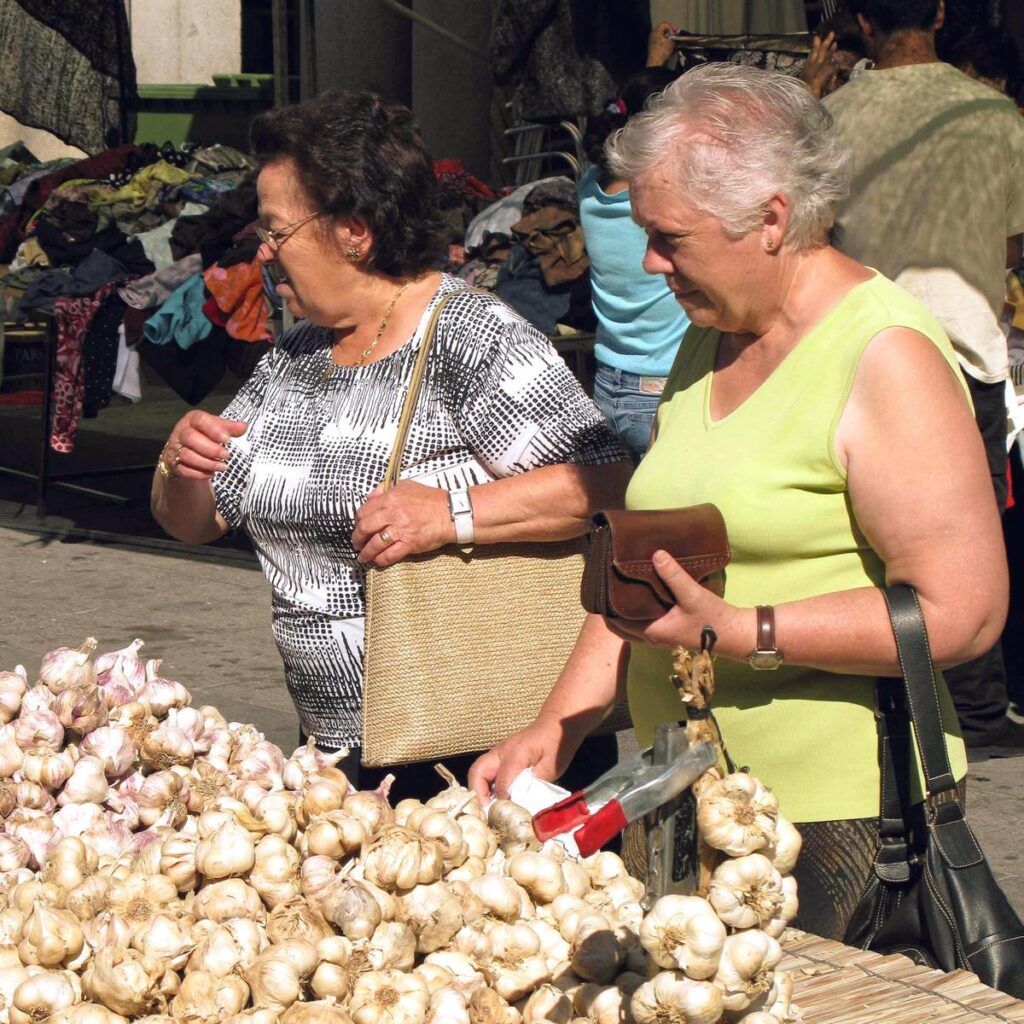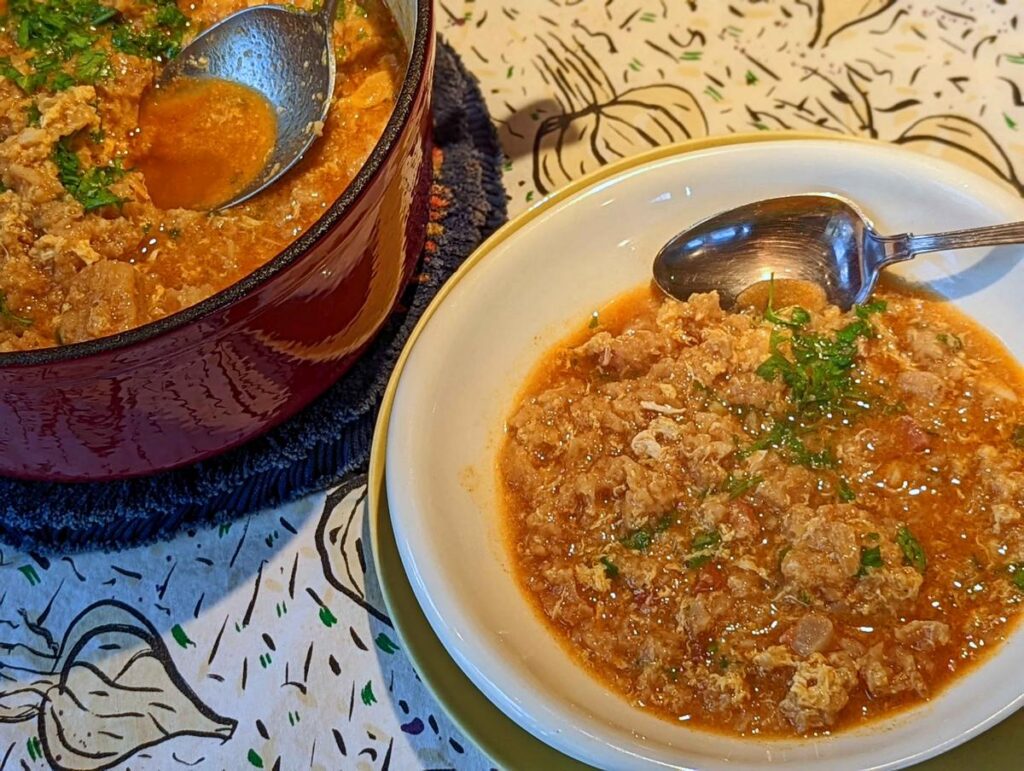
When we were working on our various guidebooks to Spain, we would often spend an intense period of time researching and photographing from dawn into dark. We really couldn’t afford any down time. But when we arrived in Madrid one January for a month of work, David was completely knocked out by a head and chest cold. He picked up an over-the-counter cold syrup from a friendly farmacia and promptly went to bed. Pat hit the streets with notebook and camera in hand. When she returned to our room at the Room Mate Oscar (room-matehotels.com) in Chueca that evening, she dragged David from the bed, made him get dressed, and headed for the outdoor dining spots around Plaza Mayor (photo above). Her answer for David’s cold was sopa de ajo, that is, garlic soup. It’s Spanish penicillin.
Peasant soups demonstrate folk wisdom
Peasant soups around the world embody comfort and nutrition while also capturing essential elements of their national cuisine.

We’ve already written about French onion soup and Hungarian goulash. Spanish garlic soup is their Iberian kindred spirit. Frugal cooks used stale bread to thicken whatever broth was on hand, then added an egg for nutrition. The dominant flavor comes from the stinking rose. The Spanish might use more garlic in their cooking than any other culture in the world.
Sopa de ajo is primarily a Castilian dish, well beloved during the bleak and frigid winters of the Castilian plateau. It’s spread, of course, to the mountains of Basque country and to Extremadura, but is edged out in coastal areas by various fish soups or rice dishes. The elemental soup draws on many quintessential Spanish flavors — grassy olive oil and mountain ham from Andalucía and smoked paprika from Extremadura. We add sherry, though we suspect the traditional dish was simply made with leftover white wine that had browned from exposure to air.
Mixed with a rich chicken stock, all the elements all come together to make a cure for the common cold more effective than anything at the farmacia. But don’t wait until you’re feeling under the weather. It’s delicious anytime, especially in winter.
SOPA DE AJO
We’ve encountered a lot of recipes for this soup, but they only vary in their proportions and whether or not they use ham. Some versions add a poached egg to each bowl. But we prefer to have the egg thicken the soup with rich, stringy cords that mix with the saturated bread. If you find it too thick, add more stock.
Serves 2
INGREDIENTS

- 1 head of garlic
- 4 tablespoons extra-virgin olive oil
- 2 tablespoons diced jamón serrano or prosciutto
- 8 oz. day-old bread without crusts, cut into large cubes
- 1 heaping tablespoon smoked paprika (pimentón)
- 1⁄2 cup dry sherry
- 4 cups homemade chicken stock
- 1 tablespoon cider (or sherry) vinegar
- 2 large eggs, lightly beaten
- salt and pepper to taste
- finely chopped parsley leaves
DIRECTIONS
Separate garlic into 12-14 peeled cloves. Use a hand mandoline to slice two-thirds of them very thin. Crush the other third of the cloves with the flat blade of a chef’s knife, then chop fine.
Add oil to a 3-quart Dutch oven and warm over medium-high heat. When hot, add the garlic and ham and cook, stirring more or less constantly, until garlic is golden brown (about 3 minutes).
Add the bread and smoked paprika, stirring well. Cook until bread is lightly toasted (4-6 minutes). Add the sherry and continue cooking until bread has absorbed all the liquid. Stir in stock and vinegar and bring the pot to a slow boil.
Stirring constantly with a cooking fork, slowly drizzle in the eggs. Continue cooking for about a minute until the streaks of egg are set and the bread is soft. Taste and adjust seasoning with salt and pepper, if needed. Ladle into broad soup bowls and garnish with parsley.
